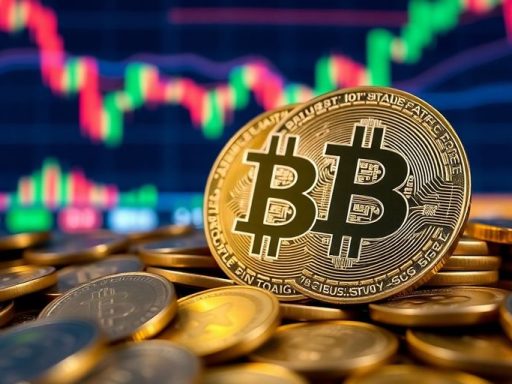Countries around the world are on the verge of a financial transformation, with discussions intensifying around the inclusion of decentralized physical infrastructure network (DePIN) tokens in national digital asset reserves. This shift could redefine how infrastructure is developed and maintained, moving away from traditional models dominated by corporations and governments.
Key Takeaways
- DePIN tokens represent a new model for community-driven infrastructure development.
- Countries like the U.S. and Czechia are exploring digital asset reserves, including Bitcoin and altcoins.
- Integrating DePIN tokens could enhance economic resilience and reduce reliance on large corporations.
- DePIN networks offer a decentralized alternative to traditional infrastructure, potentially lowering costs and increasing efficiency.
The Rise of DePIN Tokens
The concept of DePIN tokens introduces a revolutionary approach to infrastructure development. Unlike traditional models where governments or private companies control essential services, DePIN empowers communities to build and manage their own networks. This model not only democratizes infrastructure but also incentivizes participation through token rewards.
Economic Benefits of DePIN
Investing in DePIN tokens could yield multiple economic advantages for countries:
- Self-Sustaining Infrastructure: Communities can generate revenue by sharing resources, such as bandwidth from personal devices, reducing the need for heavy capital investments.
- Resilience Against Geopolitical Risks: DePIN networks are less susceptible to monopolistic practices and geopolitical tensions, offering a more stable alternative.
- Alignment with Economic Shifts: Token incentives can adjust infrastructure deployment based on real-time demand, optimizing resource utilization.
A Strategic Hedge Against Inflation
As inflation rates rise, traditional sovereign wealth funds face increasing vulnerabilities. DePIN tokens, however, can serve as a hedge against inflation since the prices of core infrastructure services are tied to the Consumer Price Index (CPI). This means that holders of DePIN assets can potentially profit from inflationary increases, preserving their asset value.
The Global Implications of DePIN Adoption
If countries adopt DePIN tokens into their digital asset stockpiles, they could create interconnected infrastructure economies. For instance, countries could share excess electricity during peak demand times, facilitated by decentralized ledgers. This cross-border collaboration could significantly reduce costs and enhance efficiency in energy distribution.
The Path Forward
To remain at the forefront of technological innovation, countries must recognize the importance of integrating DePIN tokens into their economic strategies. By doing so, they can foster a decentralized economy that prioritizes community involvement and innovation in infrastructure development.
Investing in DePIN not only addresses current infrastructure challenges but also paves the way for a future where national infrastructure is affordable and sustainable. Policymakers are urged to act swiftly to secure their nations’ leadership in this emerging landscape, ensuring that infrastructure development is a collective effort rather than a burden on taxpayers.
In conclusion, the integration of DePIN tokens into national digital asset reserves represents a strategic imperative for countries aiming to lead in the next era of global innovation. By embracing this shift, nations can unlock new economic models that benefit both communities and the economy at large.








